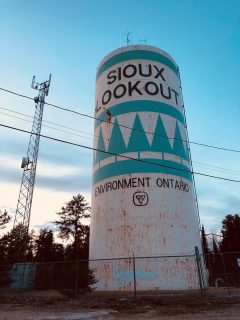 By Abigail Morris
By Abigail Morris
May 19, 2018
This summer I was offered the opportunity to travel to Sioux Lookout to do research on maternal mental health, with a focus on the Indigenous population. The topic of this project is special to me because my mother was a nurse in the NICU for over 30 years at the General Hospital in Ottawa. She has lots of experience working with new mothers and newborns. She has also seen and experienced firsthand the impact of parenting on a person’s mental health. The idea of being a new parent can be stressful and overwhelming, but it can also be an immensely rewarding experience. In communities across Northern Ontario, many women are flown to Sioux Lookout when they are 36-38 weeks pregnant; away from their primary support systems and into a new environment. This process can have negative effects on the mental health of these women, making them and their babies more vulnerable to complications. What I will be doing this summer involves interviewing maternity ward staff at the Meno Ya Win Health Centre as well as Elders and new/expecting parents to see where they feel gaps are present with regards to the birthing experience. I hope to learn how we can better support these women and empower them to feel confident as new mothers. I would also like to hear people’s thoughts on traditional birthing practices as well as more modern bonding techniques, such as digital storytelling. I am looking forward to hearing peoples’ ideas about how to enhance the mental health of new and expecting mothers.
Since arriving in Sioux Lookout, I have met a few people and started settling into small town living. My first week involved lots of exploring. I was shown the grocery store and got a tour of “downtown”. Life in SL differs from Ottawa in obvious ways (it’s much smaller and there is not as much variety in terms of shopping and entertainment. Also, the gas price is much higher); however, it reminds me of Ottawa in that people here display a sense of community and are very welcoming. There are events hosted at the library, Friendship Centre, and various schools. They also have a farm that has big, beautiful horses that people can lease. I did not know what to expect when I came to SL, but I think the anxiety associated with moving to a new place has transformed into excitement for what is to come.
In my first week here, I was able to meet with some members of the community that will be involved in my research project. In these discussions, I found out that there is much to learn about the research process. When it comes to doing research, it is necessary to treat people with respect and honour their privacy, especially when working with the Indigenous population. In the hospital setting, it may be difficult to acquire participants since doctors and nurses are very busy people with schedules that I will have to work around. Patients staying in the hostel will have to be actively sought out as they will not come to the researchers voluntarily. Although it may not be an easy or quick process, I am looking forward to hearing everyone’s perspectives. One of the women I met with was very knowledgeable about the importance of breastfeeding and how it contributes to bonding. She told us about some of the challenges that young Indigenous mothers face when flying to Sioux Lookout to give birth and mentioned that some mothers from Northern communities will bottle feed their babies at the hospital in order to get back home sooner, despite knowing that breastfeeding is better for bonding and the baby’s long-term health. This is a difficult situation to be in because the mothers want their babies to be healthy, but they also want to return to their communities. In addition, some mothers with addictions may avoid making strong connections with their babies in fear that CAS will just take their children away. The term “freedom” was pointed out as another reason for avoiding bonding with the baby. I do not quite understand this concept, but I am interested in finding out more. Another woman we talked to has worked with lots of new mothers throughout her career as a nurse and shared a bit about her experiences in some of the communities up North. We discussed traditional practices such as the use of tikinagans(and moss linings) and how these traditional cradle boards allow the baby to be held close to the mother. The strength of Indigenous women was also pointed out, highlighting their resilience in the face of adversity. Throughout this project, I am hoping to learn where this strength stems from and how it can be enhanced.